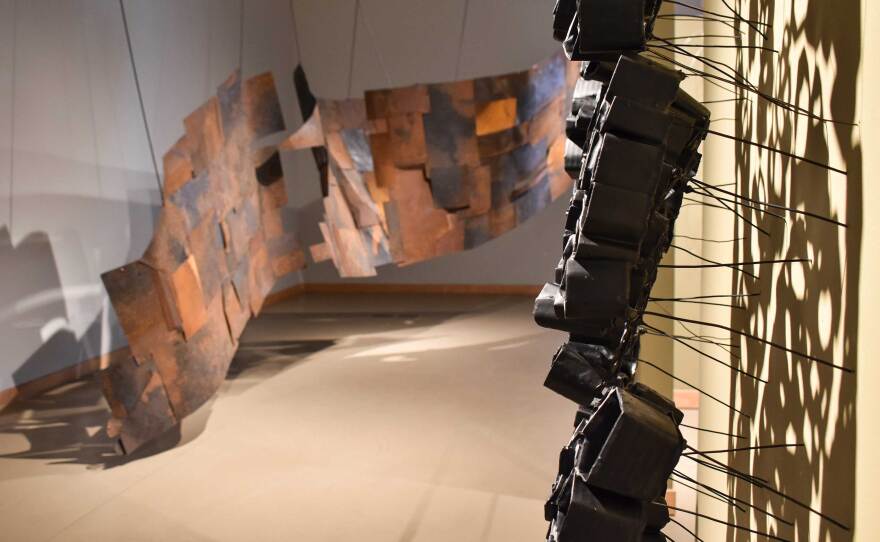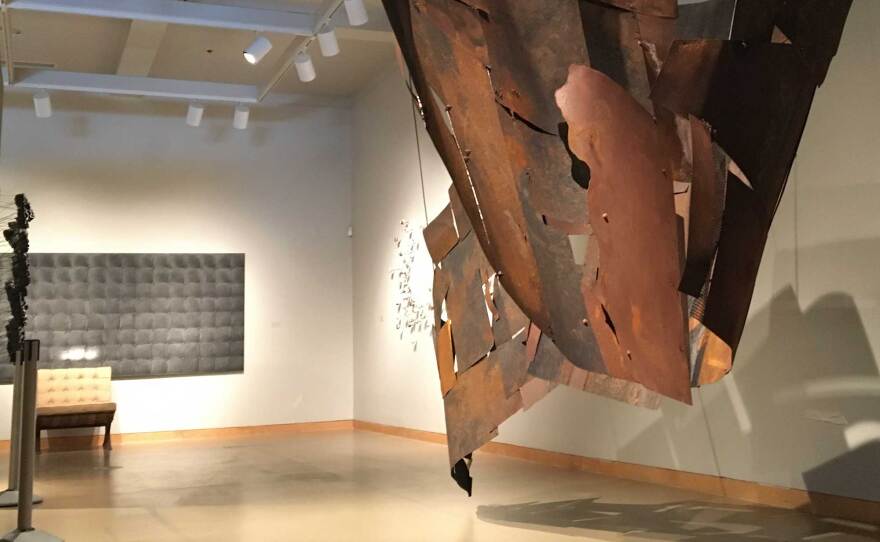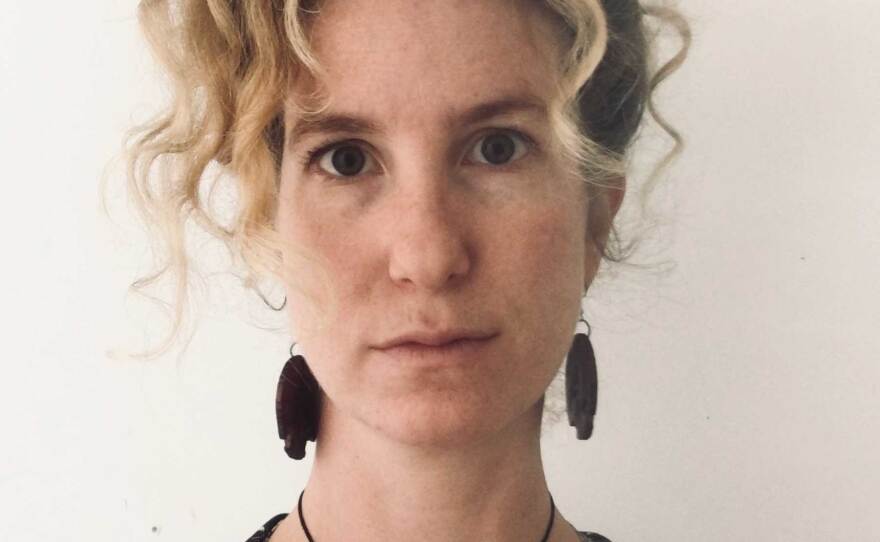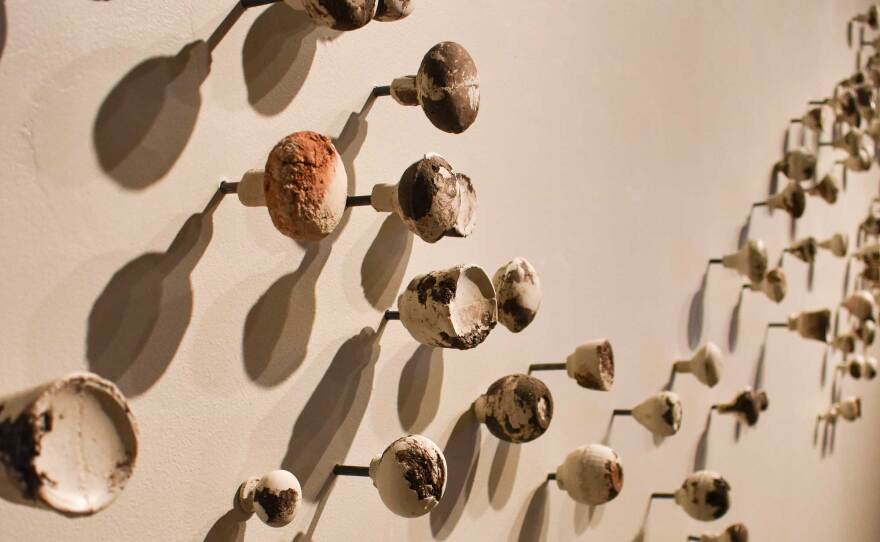"I kind of refer to myself as an intuitive maker, and I didn't even know what that meant at first," said San Diego artist Kline Swonger, a recent MFA graduate from San Diego State University. "I'm very heavily influenced by everything that's going on in my life. So I have developed a process where I will go out and start just collecting. Collecting objects, collecting words."
How to view Kline Swonger's work:
William D. Cannon Art Gallery exhibition tour video with curator Karen McGuire: 'Four Visions' (YouTube)
Swonger calls them "mental material libraries," and this early gathering stage informs what a particular piece may end up being, even if these early objects don't end up as part of her final pieces.
"And I kind of see that as the play. I really try to weave that a lot into the beginning stages of the work, and looking at those small objects and seeing how they — how I'm discovering something different about light or how something is showing differently," Swonger said.
Currently installed in the exhibition "Four Visions: A Celebration of the Year of the Woman" at the public Cannon Gallery in Carlsbad, one of Swonger's works is literally cast from those early gatherings of objects. "A Place Called Home," at first glance, looks like a collection of dozens of vintage door knobs.
She started gathering dirt — and stories of home — from participants and cast that dirt with concrete into 117 door knob-shaped molds, fashioned after actual door knobs she'd collected. When she lost her studio space at the start of the pandemic, she had to finish the piece, aptly, at home, in her own small living room. Installed in the gallery, they protrude from the wall in a shadowy wave-like configuration.
After "A Place Called Home" is taken down from Cannon Gallery next month, it will next be installed as part of the airport arts program. The piece has ultimately been purchased as part of the City of San Diego's SD Practice public art program.

Also installed at Cannon Gallery is "Crossing the Line," a stunning, massive metal sculpture, with plates of steel quilted together by hand. "I draw a lot of inspiration from nature and also the built environment. That piece in particular kind of started from this past research on the idea of barriers and fences," said Swonger, who grew up across the street from a vacant lot, and the strong childhood memories of the place played a big part in the design.
The sculpture's immediate place also informs the work.
"Every time that piece is installed, it looks different and like it grows or it shrinks, and then what's happening in the wall behind it changes," Swonger said.
Her process feeds on the twin inspiration of objects and place, and she doesn't always see the final vision for a piece until the end.
"I think just kind of discovering something like a small moment in those little studies, then I bring it to the larger pieces and I don't normally know what the larger piece is, how it's going to take shape," she explained. "Then I will just start making it, and it eventually grows over time and changes over time. And once I get into the space with the piece, then I start to see, okay, how is it reacting with the light? How can the piece have a conversation or create a tension with the surrounding architecture?"

Swonger is sharing the exhibition with three other regional artists, Marisol Rendón, Anne Mudge and Bianca Juarez. For now, Cannon Gallery — which operates in the civic complex of the City of Carlsbad library — is closed, and will remain closed as long as San Diego County is in the purple tier of COVID restrictions. While it's unlikely that the county will downgrade to the red tier before this exhibition is slated to be removed on March 7, curator Karen McGuire has put together a video tour of the exhibition.
Swonger has spent a portion of the pandemic in residence at Sepheri Gallery, and will soon move into a Bread and Salt studio. In addition, she's awaiting final word of a temporary public art installation in a city park, with frequent collaborator Kasi Muñoz.

She's also recently turned her focus to literature. Reading poetry and writing have helped her use this time to better understand other disciplines and other people — and understand her own work in a different light.
During the last year, she was struck in particular by Rebecca Solnit's "The Faraway Nearby," as well as W.S. Merwin's "The Shadow of Sirius."
"I realized it's kind of like these fragmented thoughts, or these memories that come together in there, and they give you this sense that's maybe not directly apparent. And I felt like the way I had been working was very similar to that," Swonger said. "So, okay, I think I need to start reading more poetry."






